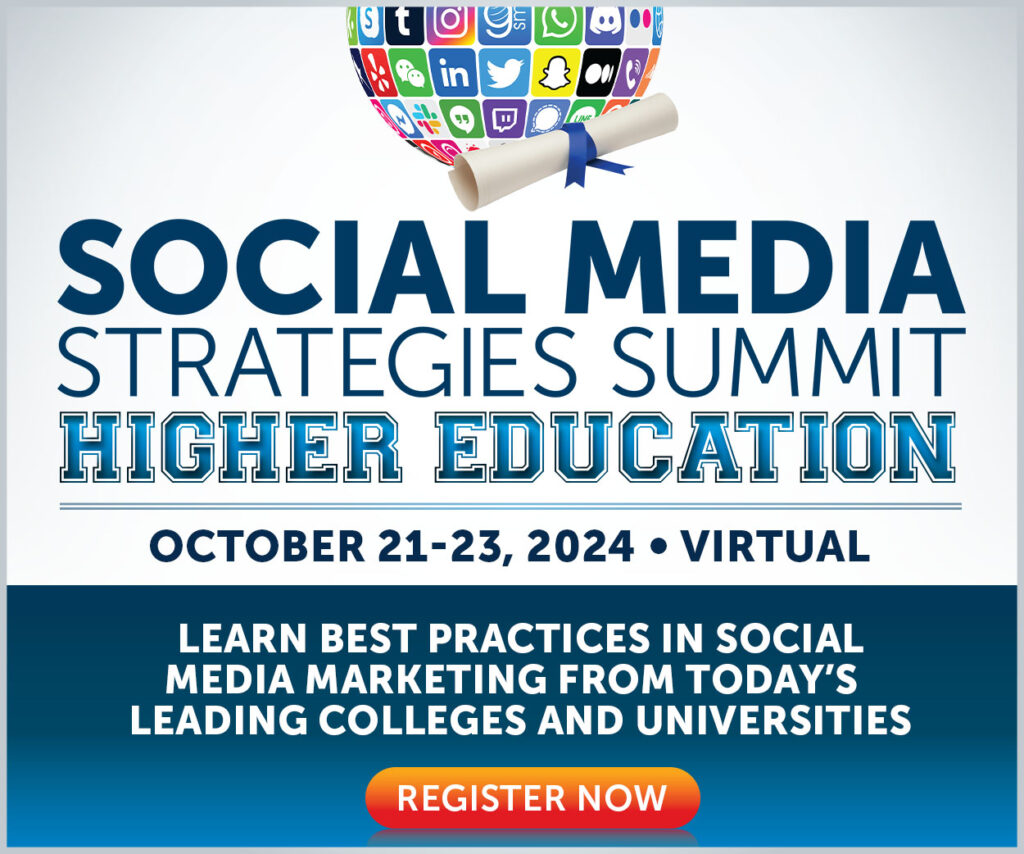Marketers spend up to 20 hours a month on content ideation.
That’s a massive chunk of their workload. And the more time they dedicate to developing ideas, the less they have for other vital tasks — like creating high-quality content and measuring the results.
Some days, ideation feels especially tough.
To help you out when you’re lost in the creative desert, we gathered a panel of social media experts to discuss how to run effective brainstorming sessions for social media campaigns, create the mental space to induce creative thinking, and use KPIs and goals as a guide for what you want to achieve with your posts.
Read on for insights from:
- Rachel Karten, Social Media Consultant
- Mitchell Clements, Social Media Creative Manager at ESPN
- Bari Rosenstein, Social Media Manager for Auntie Anne’s and Jamba
- Darby Hogan, Head of Social Media & Community at Wonderbelly
Why Is the Act of Brainstorming So Important in Social Media?
First off, our panel considered just why content ideation plays such a vital role in the life of a social media marketer.
For Bari Rosenstein, it all boils down to what matters most: the quality of your posts.
“We’re only as good as our content,” she insists. “Having a really great brainstorming session is really important to keeping your content fresh, keeping yourself relevant, and bringing your brands to consideration to new followers.”
Things are different for a brand like ESPN. For example, they tether their content to specific events — a basketball game or Monday Night Football.
Mitchell Clements explains that brainstorming at ESPN has two primary purposes:
Identifying potential “storylines” their audience will likely engage with during any sporting event, allowing them to create a bank of content ready to go if and when they happen.
Giving them the bandwidth to respond fast to viral moments as they unfold.
“It makes us more prepared and allows us to freestyle when those moments do inevitably come up,” he says.
Rachel Karten echoes Mitchell’s sentiment that for social media marketers, brainstorming isn’t only about coming up with off-the-cuff post ideas.
“Brainstorming is so important for calendar events and holidays,” she points out. “You want to brainstorm and not be like, ‘Oh, crap, it’s National Pretzel Day, what are we doing today?’”
View this post on Instagram
How Can You Use Data to Inspire the Creative Process?
Social media marketers have an eye-watering amount of data at their fingertips.
On the face of things, that data should hold the key to ideation: look at what’s performed best in the past, then do more of it going forward. However, nothing is ever quite that simple.
Darby Hogan agrees that analyzing historical performance data can play a key role in inspiring future campaigns but cautions against leaping to conclusions. She notes that it’s easy to test a new content type, see disappointing results, and then declare that the format will never work for your brand.
“Test that type of content a few different ways, a few different times, and then make a conclusion,” she urges. “Don’t let a small amount of data help you make big decisions.”
Mitchell agrees it’s important to give data the appropriate weight.
On the one hand, ESPN employs someone to help his team analyze data across all social platforms, amounting to about 300 posts a day on average.
But he also relies on his experience to quickly understand whether a specific post is under- or overperforming. “Pretty much within an hour of it being posted, we could [say], ‘We like the idea, but maybe how we conveyed it to our audience wasn’t ideal for this platform.’”
Mitchell also points out that algorithmic updates mean you shouldn’t overly rely on yesterday’s performance to indicate what will work today or tomorrow. “Numbers change for content that may have done well two years ago that doesn’t pop up anymore, and it’s because the algorithms have changed.”
Rachel takes a slightly different tack, stressing the importance of analyzing what the data is telling you and adding your own context to reports seen by senior managers: “Here’s the data, but here’s how I’m ingesting it before you come to any conclusions based on one underperforming post.”
How Do You Structure a Productive Brainstorm?
Our panel agrees that effective brainstorming is essential for social media marketers and that data doesn’t necessarily hold all the answers to identifying high-quality creative ideas.
So, what does productive brainstorming actually look like?
Mitchell says his team at ESPN has gone through multiple iterations of the creative process to find what works best. They now use a six-step workflow to brainstorm ideas:
- Event leads overseeing an event — like Wimbledon or the NBA Finals — get together and develop initial thought starters.
- They schedule a brainstorm for the entire social team to meet together to throw out all ideas.
- The 75+ person social team splits into smaller breakout groups via Zoom, giving individuals more chances for their pitches to be heard.
- After those breakout groups, they reconverge into the bigger Zoom chat, and the leader of each breakout group presents their best ideas.
- The event leads meet with Mitchell to decide on their favorite ideas and whether they can create them in-house.
- If necessary, they can go out-of-house to an agency or an individual creator to produce the content.
From there, they have a content plan covering all eventualities. “If the Nuggets win the NBA Finals, we know what post is going to go out during what wave, and we typically have multiple waves for an event.”
How a Post Goes From Ideation to Publication (With Examples!)
We’ve looked at what a productive brainstorm looks like. But how do you take a post all the way from the initial idea to the finished article?
Mitchell highlights an example from the NBA Playoffs when the Lakers played the Warriors. A video went viral featuring a corgi who predicted the Warriors would win in seven games by bouncing a ball of its nose and into a bucket labeled either “Warriors” or “Lakers”:
@aircorg Golden State Warriors vs Los Angeles Lakers, who’s winning? 🤷🏻♂️ #nba #2023nbaplayoffs #dubnation #warriors #LA #lakers ♬ Cupid – Twin Ver. (FIFTY FIFTY) – Sped Up Version – sped up 8282
In a brainstorm, someone pitched that Mitchell’s team should do something with the corgi.
Ultimately, it turned out the dog in question wasn’t quite the Nostradamus (or should that be Pawstradamus?) that people thought because the Lakers won.
That allowed Mitchell’s team to create a piece of reactive content. “After the series, we made a TikTok where we remixed the video of the corgi hitting the ball into the bucket, and we had LeBron emerge from the staircase to block the shot.”
@espn Bron got the dog in him‼️😅 #NBAplayoffs #Lakers #NBA ♬ original sound – ESPN
Mitchell says the video did “very well,” racking up over 660,000 likes.
“It was timely. It was based on a viral video in the sports media space. And that all started from a brainstorm like, ‘Hey, how can we flip this?’”
What About Planning Lower-Budget Social Campaigns?
Of course, most brands don’t have 75+ people on their social teams.
What happens if you brainstorm a ton of amazing ideas but don’t have the budget or the bandwidth to create them?
Darby’s advice for marketers promoting a physical product: keep the product with you and pull out your iPhone.
@wonderbelly We took Wonderbelly to a @New York Mets game. There was a rain delay so hot dogs, beers and hot sauce challenges were had. Needless to say, bringing heartburn relief was a grand idea ❤️🔥🌶️🔥⚾️ #wonderbelly #anatcid #heartburn #heartburnrelief #baseball #newyorkmets #raindelay #beers #hotsaucechallenge ♬ Chill Vibes – Tollan Kim
“So many platforms right now are prioritizing that scrappy, relatable, shot-on-an-iPhone, unedited type of content,” she explains.
“Something that I always did when I was at Liquid IV was to carry an unopened stick in my purse. As I went about my day, I pulled out my iPhone and either snapped photos or quick little clips that I could use to make a Reel or TikTok later on.”
Bari agrees: “Your iPhone is your best friend.”
She stresses that marketers shouldn’t worry about trying to curate an aesthetically flawless feed. “The imperfect feed is what’s perfect.
“People are posting memes, people are posting selfies, they’re posting Reels and TikToks, and there’s such a mishmash of stuff. Use that to your advantage.”
@jamba Looking for a berry delicious Spring drink? Make April’s Monthly Mystery Smoothie with us: Strawberries n’ Cream 🍓 #fyp #jamba #jambajuice ♬ Sunshine – WIRA
Rachel says this advice doesn’t just apply to smaller brands with limited social media budgets; it’s just as true for household names.
“Scrappy content — even for the Guccis, the most buttoned-up brands in the world — is performing better than the more stylized, high-definition DSLR shots.”
Where Do You Go When You’re Struggling for Social Ideas?
When the creative well runs dry, Bari draws inspiration from brands within her niche — like Zaxby’s and McDonald’s — that consistently create fantastic social content.
who would win? pic.twitter.com/k4LXU7fFiA
— Zaxby’s (@Zaxbys) August 9, 2023
But she also recommends casting the net further afield.
“I try to follow a bunch of different creators, brands outside of my industry, and influencers because I can take the songs or templates that they’re using and figure out a way to make it all about pretzels and smoothies.”
How Are Brands Working With Creators?
Traditionally, working with influencers involved creating content about your brand and posting it to their profiles. But increasingly, creators are producing content to be shared on brand pages, Darby explains.
Two factors inform this:
- Consumers increasingly favor raw, authentic content
- Social managers often lack the time to create content themselves
“Outsourcing it is super helpful because you’re getting that content from someone else,” she explains. “And then usually the creator is a familiar face to your community as well, so you’re killing two birds with one stone.”
What’s Your Best Advice for Unlocking Creative Ideas?
Lastly, our panel shared top tips for consistently generating high-quality creative ideas.
Mitchell recommends seeking out AI tools to support the creative process. “There are so many different tools that we have adopted as a design team with ESPN that have either made the process of creating content faster or unlocked different ideas for us.”
Best of all, those tools are often free during the beta phase, so it pays to sign up early.
Darby used to recommend spending your downtime browsing social platforms for inspiration. “Scrolling is research,” as she puts it.
However, she now feels the most effective way to fuel creative ideas is to put down her phone.
“The best piece of advice, which might sound really contradictory to being a social manager, is to totally unplug and go for uninterrupted walks outside,” she says. “I feel like that’s when my best ideas have come to me.”
Meanwhile, Bari reminds social media marketers that they don’t have to reinvent the wheel with every post, and that it’s totally fine to get inspiration from your competitors — or even copy their posts and add your own spin.
“There are a bazillion ideas out there, and when you’re strapped for ideas and time, sometimes it helps [looking at] your competitors. And that spins off [into] other ideas.”
Learn more about unlocking your best creative ideas (and turning them into scroll-stopping content) by signing up for one of our upcoming social media conferences.
Featured image by Freepik.









